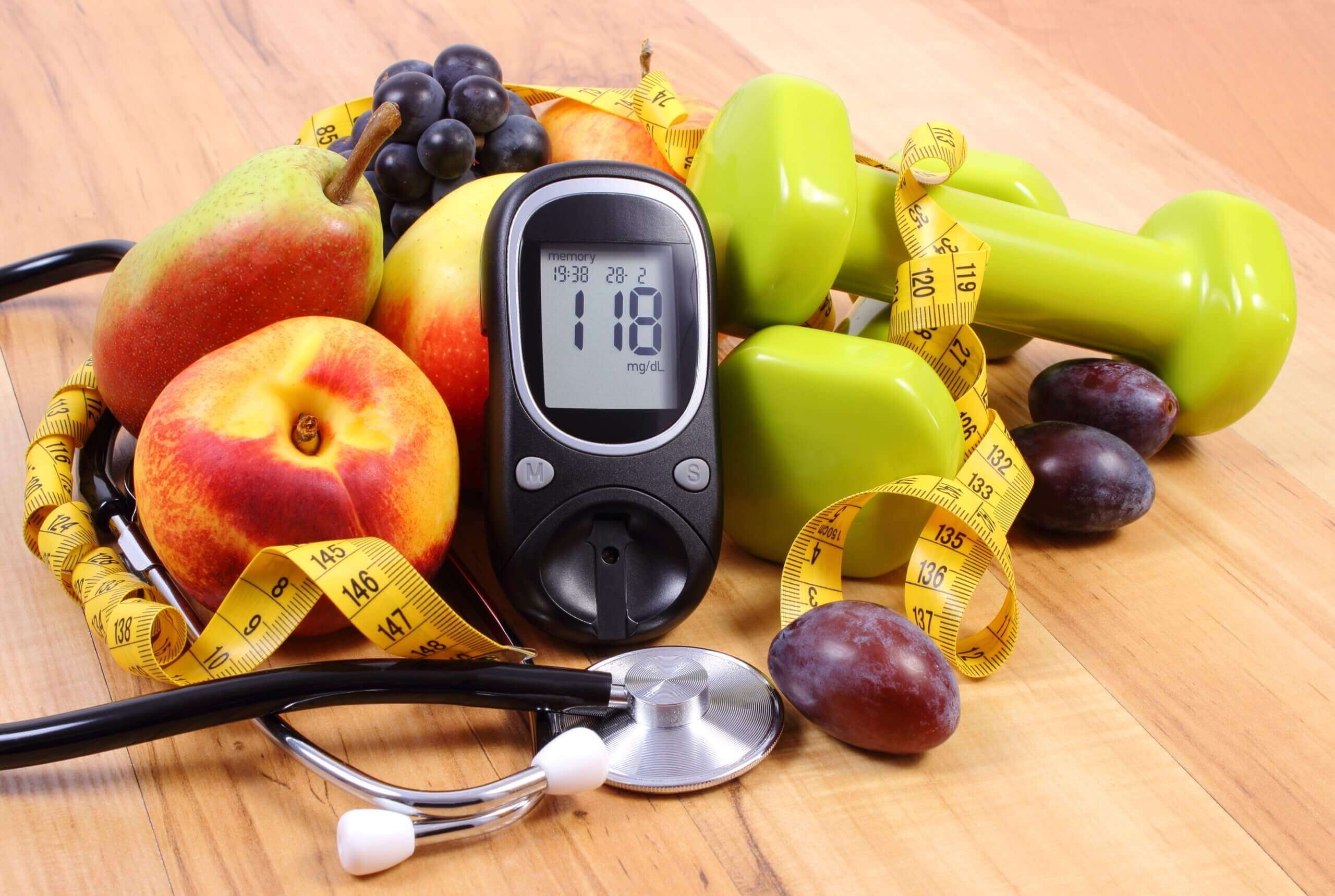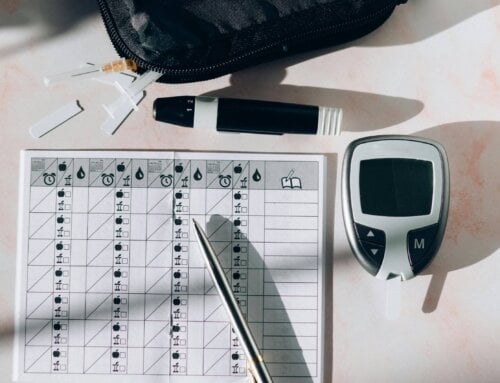Coping with type 2 diabetes may cause frustration, but once you learn the “how’s and why’s”, you may be surprised at how well you can do along with added care and information from your diabetes team. Diabetes is a chronic disease and can be challenging for anyone, everyone and possibly even you! These feelings are normal, but with proper knowledge and good day to day management skills, you will be on your way to feeling better, having controlled blood sugars, and living a more active and healthy life.
How To Get Where You Need To Be:
-
Learning the Basic Skills.
There are many various diabetes self-care skills which can make your daily life easier to manage. “Knowledge is power” and may help you prevent the “highs and lows” of your blood sugars by understanding when and why that may happen. Most health insurance programs offer a 10-hour diabetes self-management out-patient program. After the initial course, you than get 3 hours of educational follow-up yearly. If there is a change in your diagnosis and/or diabetes medication from pills to insulin, you may even receive additional educational hours. Check with your health insurance plan to see what you are entitled to.
-
Find and Organize your Essential Diabetes Team.
You need to feel confident and trust the players (medical professionals) on your team. There should be no secrets between you and your team. You should feel comfortable about telling them the truth about how you really feel, what are your concerns and what are you willing to do to manage your diabetes. Suppressing your questions and concerns gets you nowhere. Be honest. Start the conversation with your family, friends, peers and colleagues. They can be your cheering squad and push you along on the days you are discouraged.
The other team you most definitely need is your medical team. Included should be your internist, endocrinologist, dentist, ophthalmologist, cardiologist, nephrologist and possibly a mental health specialist. With a medical team in place, you will be managed and have an active channel for questions and concerns. Complications of diabetes should be limited when you and your team take charge.
“Each patient is unique, even though they may all have type 2 diabetes.” Optimal communication is needed between you and your physician as this helps you create the individualized approach and plan that you deserve and need. This gives you an opportunity for shared decision making. Include your loved ones in the discussion as well. Your current lifestyle, past and present habits, culture, and financial/economic situation should be discussed and included in your new care plan.
-
Fear Can Still Be Real.
Dealing with your health and the unknown can be scary for anyone. Insulin injections, GLP1 injections, finger sticks, sensor insertions, wearing specialized diabetes equipment (such as an insulin pump), possibly requiring dialysis for kidney problems may be overwhelming. By learning and talking about your fears, and the risks and treatment associated with diabetes, you may easily overcome many negative aspects. Being mentally stronger can help push you to accomplish what is needed with your care.
Sticking to a specific and complete diabetes care plan can help reduce unwanted fear which may make you stop in your tracks. Anxiety, fear, and depression should fade away and be replaced with confidence when your diabetes care plan is in place. Stress zaps your energy and concentration and may lead to chronic hypertension or elevated blood sugars. Learn and practice simple techniques that can help relax you and allow you to focus. Deep breathing is a very effective relaxation technique which can be done anywhere at any time.
Progressive muscle relaxation is easy to do in about 10 minutes and takes the mental edge off quickly. You simply tighten and relax your muscles in progression from your head to your toes. There are several free apps to help you get started and teach you these relaxation skills.
If the fear, anxiety and depression remain, talk to a mental health professional, social worker or therapist. They can give you tips and techniques to get you into a better mental place. This will get you back on track with your diabetes care and over-all health.
Type 2 Diabetes: Please Explain
Type 2 diabetes can occur because we do not make enough insulin or we do not react to the insulin we already produce (insulin resistance), or a little bit of both.
What’s the process? We eat food consisting of protein, fat and carbohydrates. The carbohydrates break down into sugar or glucose. Glucose enters the bloodstream and due to insulin from the pancreas unlocking the cell doors, glucose eventually enters the cells. Glucose or sugar is needed to provide energy to your body. Some glucose is needed for our body to function correctly. With enough glucose, the cells become energized.
When the sugar correctly enters your cells, it drops the amount that is floating in your bloodstream. This is the normal sequence. With type 2 diabetes, there is not enough insulin, or the insulin does not work correctly, and glucose remains in the blood stream instead of entering the cells creating elevated blood sugars and eventual damage if not treated.
Am I at Risk? Things which play a role:
- Being over 45. More than 40% of Americans with diabetes are 65 years or older
- Being inactive
- Being overweight or obese. Having an “apple shape” compared to a “pear shape” (carrying your weight in your middle).
- Having high blood pressure
- Having a family history
- Certain ethnicities (Hispanic/Latino, Black, Asian American, Pacific Islander, American Indian)
- Women who have had gestational diabetes during pregnancy
- Obese children, especially those with a family history of diabetes
Diabetes – The Symptoms:
- Possibly no symptoms at all
- Unexplained weight loss (mostly type 1)
- Tingling or numbness in your hands or feet (neuropathy)
- Increased hunger, thirst, and/or urination
- Dry mouth
- Cuts and sores that do not heal
- Blurred vision
- Increased fatigue/headaches
- Frequent genital infections or oral thrush
Do You Have A Plan? What does it Include?
- Control you blood sugar. You will need to monitor it with either a glucose meter or continuous glucose monitor (CGM). Decide with your health professional which kind is best for you. Also find out the number of times to test per day and when to test blood sugars.
- Get your 3-month A1C values and follow the progression.
- Change your diabetes plan as needed or as your disease progresses.
- Meet with your medical team as often as recommended and do not skip appointments.
- Understand, appreciate, and try to eat properly and healthfully.
- Incorporate physical activity. “The sweet spot seems to be 7000 steps a day or play sports such as tennis, cycling, swimming, jogging for more than 2.5 hours a week, according to 2 large scale studies of the relationship between physical activity and longevity.” More than 10,000 men and women were studied for decades.
- Mental fitness and a positive attitude matter.
- Keep track and take all diabetes medications prescribed.
Take Baby Steps
Some of you are already active and eat a reasonable diet. Many of you have never exercised or needed to think about what to eat. Some of you have never taken any medication or visited a physician routinely. Some of you only see a doctor when you are sick. Obviously with a diabetes diagnosis, things will definitely need to change. Start small with baby steps. Positive changes in any capacity is beneficial for diabetes control.
Be good to yourself and do not expect too much too soon. Change is difficult for anyone. Everyone has setbacks. Jump back onto your plan the very next day. Don’t linger in your old habits. You may fall back to old ways, but self-awareness is the first step. Recognizing you need to make necessary changes is half the battle. Be happy with any and every positive change in your behavior.
For example, even a small weight reduction is helpful to your diabetes control. “Losing 5-10% of your total body weight is beneficial.” Be proud of yourself if you participate in any activity that day. Incorporate one new healthful food each day. Keep a written record of your blood sugars instead of just taking them.
Tips and Tricks for Eating and Activity with Diabetes:
You can start with eating the foods you want, just less of them. If rice is part of your culture or your favorite food, eat it but in proper portion size. Try to use wild and long grain rice instead of quick cooking white rice. The longer the rice cooks, the more starch is removed from it. Use measuring cups or visual images to understand what a portion really is. Use your fist, thumb, and palm for portion sizes. Your body will process any carbohydrate into glucose, some slower and others faster. As you learn which carbohydrates affect you more, you can then make better choices.
Test your current cooking methods and skills. Learn to trade out ingredients. Instead of using a cup of oil or a stick of butter to blend baking ingredients together, use applesauce or mashed banana for texture and mixing if you decide to bake. Substitute spices like cinnamon and nutmeg or natural flavorings such as vanilla or maple for plain sugar to add sweetness. Artificial sweeteners and other sugar substitutes may be helpful in cooking and baking. Check with your health care provider for the best available choices for you.
Carry your own snacks. Even if you do not experience low blood sugar or hypoglycemia, you may miss a meal and over-eat at the next one. Feeling hungry can lower anyone’s willpower. Carry healthy snacks to keep you on track. A piece of fruit or 10-12 grapes or cherries and a handful of unsalted nuts can be a wholesome snack. Carrot and celery sticks with 2 tablespoons of hummus, a hard-boiled egg with a small whole wheat wrap or a cheese stick with 2 whole grain crackers can easily take the edge off until the next meal. These are easy to pack and carry.
Know your food triggers. This is one of the biggest problems with staying on an eating plan. Do you starve and then binge? Do you eat too fast? Are you standing while eating? Do you eat out of the bowl or make a plate? What are you craving? Why do you crave certain foods? Why do you constantly over-eat? Do you wait until the evening to eat?
What are some specific triggers?
- Are you bored or tired?
- Are you grieving or depressed?
- Do you eat out of obligation? Did someone cook or bake for you? Do they do it often?
- Do hormonal changes play a part?
- Is food your reward or comfort?
- Are you anxious or stressed?
- Do you crave calorie dense foods like sugar, salt and fat?
- Are you addicted to a certain taste?
- Are you food insecure? Afraid of not getting enough to eat? Did you grow up in a big family fighting for food?
- Is this just a habit?
- Does it remind you of past pleasures?
- Do you equate family functions and past memories with meals?
- Were you rewarded with treats as a child?
If you can’t answer these questions or choose not to answer these questions on your own, get professional help in identifying them. Finding the answer can be a game-changer in the way you look at food.
Consider meal delivery services.
These services cropped up and have been a life saver to some of you. It beats stopping for fast food meals. Most meal plans, kits and services are not “diabetes specific” and they do not need to be. Meal kits or meal services offer well-balanced choices and generally include diabetes friendly foods. They can help you branch out with your food selections.
You must consider the price, the time it takes to prepare the meal, and the complexity of the meal to be prepared. Do these meal plans have several choices? Meal kits have exact food quantities which make it difficult to over-eat. Some meal services introduce you to new foods you may never try and others let you swap out ingredients that you prefer. There are many to choose from. Some well known ones include: Hello Fresh, Blue Apron, Bistro-MD, Home Chef and Sunbasket.
Be mindful. Just as you need to be mindful about your mental state – happy, sad, satisfied, stressed, anxious, or depressed – you need to be mindful about what, when and how much food you eat. Try to plan each meal so that it is balanced. Never completely skip carbohydrates which may make you feel weak and irritated and then cause you to over-eat at the next meal. Learn to count carbohydrates or at least recognize portion sizes of carbohydrates. Know which carbohydrates satisfy you. Have a protein food with each meal. Just like we know sleeping on a schedule is important so is eating on a schedule. Don’t wait longer than 4-5 hours between meals.
Eat Healthier
Eliminate or limit processed and refined foods. Avoid sweet drinks and drinks with calories except for low fat milk. You can decide if plant-based or dairy milk is better for you.
You can treat yourself now and again, just not all the time. That is why it is called a treat. Eat less rice, bread, pasta or potatoes if you really want that homemade chocolate chip cookie or slice of pie for dessert. Most desserts offer no or little nutrients, but sometimes you crave them and have to have a bite or an entire piece. Allow yourself a treat and then go back to your healthier choices.
Continue to eat out but do it less frequently. Besides saving a lot of money, you will save on calories, salt, sugar and fat. Many restaurants, especially chains, cater to the masses and flavor with too much salt and fat. This is not the best plan for anyone but especially not for someone with diabetes. Check out the menu online prior to getting to the restaurant. Choosing your meal when you are not starving will help you plan better.
Try not to dine out during peak hours and holidays. Standing and waiting for long periods of time can lead to poor choices and over-ordering when finally seated. If possible, try to make a reservation. Tweak the side dishes and substitute out fried potatoes for fresh vegetables instead. Substitution is much more common now. Start your meal with a to-go container especially when offered huge portions. This immediately eliminates the temptation. Use the other half for a meal at a later time. Share a main course.
Ask about low sodium options. Sauces, gravies and chicken dishes may have more salt than you expect.
What about diabetes-friendly options?
Avoid “diabetic foods” which generally do not taste good and may contain high calories or cause a laxative effect.
Use low-fat, unsweetened dairy products and low-fat cheese. Creamers – whether they are almond milk, oat milk, coconut milk or soy milk – should be the unsweetened variety. The flavored, sweetened versions such as caramel, sweet-cream, hazelnut or vanilla add sugar, fat and unneeded calories which will raise your blood sugar.
Eat fiber rich foods like chick peas, bulgur, beans, whole oats, quinoa, non-starchy vegetables, and whole grains which can decrease inflammation, fill you up more quickly and slow glucose absorption. Starchy foods without fiber cause your blood sugar to go up faster.
Use dips, dressings and sauces on the side. Dip your fork with a bite of food into the sauce, dip or dressing instead of pouring them over your entire plate. This cuts down on calories, sugar, fat and salt.
Balance all food groups. Protein helps maintain muscles and repair wounds. Red meat should be eaten in moderation. Good fats offer benefits and make you less hungry. Carbohydrates aren’t always the enemy, even with diabetes.
Is there a perfect diet for Type 2 Diabetes?
There is no “true” diabetes diet. Read up or work with a professional if you are unsure of what healthy eating entails. It is not difficult or magical. Always remember to eat whole foods, a vast variety of foods, plan the times of your meals and watch portions. Drink calorie free beverages and stay hydrated.
Skip the “diet of the moment” or the “new fad diet”. Most of them turn out to be unsuccessful, offer no long-term health benefits and are rarely suggested after being studied by scientists.
Stay Active
- Decide what you like to do for your physical activity so that you are willing to stick to a routine. Classes are great if you like comradery. Doing your own thing is fine too. Combine a program of resistance bands, free weights or circuits and aerobic activities for a complete workout. Schedule a specific time for your fitness and try to keep your plan. Make it fun and look forward to it. The time of day you choose to work-out only really matters to you as long as you are consistent.
- Weight loss is predominately based on your food intake but sitting all day is dangerous to your overall health. Daily movement, whichever manner you choose, will make you feel better both physically and mentally. Exercise also uses glucose which will lower your blood sugars.
- Purchase good walking shoes and always wear socks. Make sure to update your shoes based on how frequently you walk. Look at your shoe soles after 6 months to see if there is sufficient tread on the bottom. Change your socks daily. Creating rubbing and blisters is especially dangerous with diabetes. Keep your toenails short and squared off to help minimize any injury to your feet or toes.
- Make sure to visit your podiatrist if you have loss of feeling or numbness in your feet or if you see a problem. Some people use a maintenance program of visiting a podiatrist every 3 months to prevent any future issues.
Final Thoughts
Please do not worry about what you think you should be doing. Try your hardest to do what you can. There is no perfection or perfect plan for anyone who has diabetes. Do what you can and follow the aspects that matter most to you and your physician. Breaking old habits is difficult and starting new habits can be even harder. None of this is ever easy, but trying to create a diabetes care plan will get you on your way and keep you focused!
References
- https://www.cornerstones4care.com/staying-on-track/little-wins/diabetes-mental-health.html
- https://healthline.com/health/type-2-diabetes/tips-boost-longevity-diabetes
- https://healthline.com/health/diabetes/nutrition-and-exercise-hacks#Identify-your-food-triggers
- https://mayoclinic.org/diseases-conditions/type-2-diabetes/indepth/diabetes-prevention/art-20047639
- https://www.diabetes.org.uk/guide-to-diabetes/enjoy-food/eating-with-diabetes/10-ways-to-eat-well-with-diabetes
- https://www.everydayhealth.com/type-2-diabetes/features-of-an-ideal-type-2-diabetes-treatment-plan/
- https://www.piedmont.org/living-better/foods-that-trigger-overeating
- https://www.nbcnews.com/select/shopping/best-meal-kit-delivery-services-ncna1287814













Leave A Comment